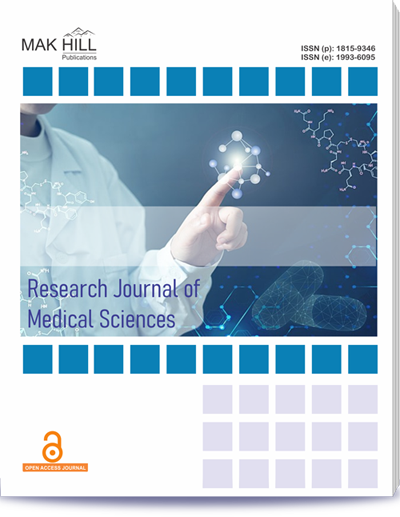
Research Journal of Medical Sciences
ISSN: Online 1993-6095ISSN: Print 1815-9346
82
Views
8
Downloads
Study of Fixation of Auto Graft in Anterior Cruciate Ligament Reconstruction at Femoral End with Suspensory Loop (Suspensory) Fixation V/S Interference Screw (Aperture) Fixation
Shaik Mohamed Abid and B. Mahesh
Page: 120-125 | Received 25 Sep 2021, Published online: 22 Dec 2021
Full Text Reference XML File PDF File
Abstract
This prospective study is to compare the fixation strength between suspensory loop(suspensory) and interference screw(aperture) in arthrosporic ACL Reconstruction using autogenous Hamstring grafts. The present study consists of 70 patients with a history of knee injuries who have admitted in Department of Orthopaedics during the period of two years, with a duration of follow‐up 3rd month, 6th month and 12th month postoperatively. In the present study, out of 70 patients, 59 (84.3%) patients were males and 11 (15.7%) were females.16 (45.7%) patients who had RTA and 19 (54.3%) patients had sports injury underwent aperture screw fixation. 18(51.4%) patients had RTA and 17 (48.6%) patients had sports injury underwent suspensory loop fixation. Among the patients who underwent aperture screw fixation, 12 (34.3%) patients had left side of injury and 23 (65.7%) patients had the right side of the injury. Whereas in the suspensory loop fixation, 14(40.0%) patients had left side of injury and 21 (60.0%) patients had the right side of the injury. In the present study, 22(31.4%) patients had a grade‐II ACL tear, and 48 (68.6%) patients had a Grade‐III ACL tear. In the present study, 1(1.4%) patient had a grade‐II lateral meniscal injury, 1(1.4%) patient had a Grade‐III lateral mensal injury, 6 (8.6%) patients had a Grade‐III medial meniscal injury and 62 (88.6%) patients had no associated injury. Among the patients who underwent aperture screw fixation, 2 (5.7%) patients had a Grade‐III medial meniscal injury and 33 (94.3%) patients had no associated injury. Whereas in the suspensory loop, 1(2.9%) patient had a grade‐II lateral meniscal injury, 1(2.9%) patient had a Grade‐III lateral meniscal injury, 4 (11.4%) patients had a Grade‐III medial meniscal injury, and 29 (82.9%) patients had no associated injury. There is a statistically significant difference between the type of threads for KSS_Pain Score at pre‐op (P=0.003). There is a statistically significant difference between the cutting thread and smooth thread for KSS_PAIN SCORE at 6 months (P=0.012). There is a statistically significant between the suspensory loop and aperture screw for KSS_Pain SCORE at 12 months (P=0.021). There is a statistically significant between the suspensory loop and aperture screw for KSS_Function Score at 3 months (P=0.0110). There is a statistically no significant difference between the suspensory loop and aperture screw for KSS_Function Score at 6 months (P=0.004). The mean±SD of KSS_Function Score for aperture screw (92.65±5.19) higher than the mean±SD of KSS_Function SCORE for suspensory loop (98.67±6.08) at 12 months. There is a statistically significant between the suspensory loop and aperture screw for KSS_Function Score at 12 months (P=0.347).
How to cite this article:
Shaik Mohamed Abid and B. Mahesh. Study of Fixation of Auto Graft in Anterior Cruciate Ligament Reconstruction at Femoral End with Suspensory Loop (Suspensory) Fixation V/S Interference Screw (Aperture) Fixation.
DOI: https://doi.org/10.36478/10.36478/makrjms.2021.120.125
URL: https://www.makhillpublications.co/view-article/1815-9346/10.36478/makrjms.2021.120.125